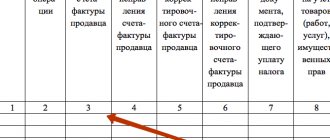Receipt cash order (PKO) in 2021
PKO refers to primary accounting documents and reflects the fact of receipt of money at the cash desk.
The format and requirements for filling out a cash receipt order are regulated by the Decree of the State Statistics Committee of the Russian Federation “On approval of unified forms of primary accounting documentation for recording cash transactions and recording inventory results” dated August 18, 1998 No. 88. Form KO-1, which remained unchanged for 2021, can be downloaded on our website using the link below.
For information on the document that is used to document expense transactions at the cash register, read the article “Unified form No. KO-2 - cash expense order .
The procedure for registering cash transactions was explained by ConsultantPlus experts. If you don't already have access to the system, get a free trial online.
PKO instead of BSO
Is PKO suitable for the listed options? Let's consider the first two points: BSO and “other document”.
I’ll say right away that the BSO has its own requirements for mandatory details (clause 2 of the Russian Government Decree No. 359 of 05/06/2008), in addition, it must be approved by the individual entrepreneur (or LLC) and printed in a printing house. There are similar requirements for “other documents” (the list of details is given in paragraph 1 of Article 4.7 of Law No. 54-FZ as amended on July 3, 2016).
Now let's talk further. If the transaction of accepting cash for goods is processed by the PKO, the client will then receive a receipt for the PKO. Can it replace the BSO or “other document”? No, it cannot, because the lists of mandatory details of these documents differ from the details of the receipt form.
Is it possible to modify the form of the receipt for the PKO so that it meets at least the requirements that apply to the “other document”? This is only possible in theory; in practice there are several significant snags:
- The type of PKO has been approved, it is drawn up according to form No. KO-1 - who will finalize the unified form? There are few people willing.
- In order for a receipt for a PKO to pass as a BSO, it needs not only to be finalized, but also to have the forms printed in a printing house - especially since no one will do this.
- There is one more important point, even more theoretical than the previous ones. Provided that the first two points are fulfilled (let’s imagine this), we will essentially receive a new document. The original purpose of PKO is to record cash transactions at the cash register. Will our new document still be considered suitable for processing cash transactions, since it will be different from KO-1? Will the modified PKO remain legitimate for its original purpose? The issue is very controversial.
Conclusion: there can be a lot of theoretical reasoning on this issue, we have absolutely no need for it. In practice, there is only one conclusion: a receipt from the recipient cannot replace the BSO or “other document” that must be issued to the client if the individual entrepreneur has the right not to use the cash register.
Now let's turn to the last option, when the individual entrepreneur may not give anything to the buyer. In fact, if an individual entrepreneur is not obliged to issue anything to a client, but issues a receipt for a receipt, this does not directly contradict Law No. 54-FZ.
But let's pay attention to this. A receipt from a PKO can only be issued when the cash goes directly to the “cash desk” of the individual entrepreneur (or organization). Let us remind you that it is possible not to issue anything to the buyer only in case of exceptions related to the specific nature of the activity and location.
It turns out that “cash office” practically does not fit in with this exception. For example, an individual entrepreneur cannot receive money at the “cash desk” in any way if he is engaged in retail trade or from tanks, or selling products at a fair. It turns out that issuing a receipt to the client to the receipt in this case indirectly contradicts clause 3 of Law No. 54-FZ.
Conclusion: in this case, theoretically, it is still possible to issue a receipt to the PKO without violating anything. But this possibility is so small, and the justification is so confusing, that it is difficult to draw a conclusion about the legality of such actions.
How to fill out a cash receipt order
The current form of the cash receipt order is mandatory, and only it should be used in cash transactions.
Responsibility for failure to comply with the form of the primary document is disclosed in the material “Primary document: requirements for the form and the consequences of its violation .
However, the format for filling out a cash receipt order in accordance with Goskomstat Resolution No. 88 can be determined independently: both a hand-filled form and other options are used. Currently, all accounting programs are equipped with the option of filling out such documents; a similar service is also available on specialized websites.
Directive of the Central Bank of the Russian Federation dated March 11, 2014 No. 3210-U provides for the possibility of registering a PKO:
- On paper - either completely by hand, or the accountant enters information into the KO-1 form on a computer, then prints out the document and signs it with authorized persons of the organization.
- In electronic form - using technical means, taking into account the protection of the software from unauthorized access. In this case, the electronic receipt is signed with an electronic signature (clause 4.7 of instruction No. 3210-U).
Features of filling out the PKO
The law establishes that legal entities can pay each other in cash amounts of no more than 100 thousand rubles under one agreement.
If the cashier is offered to accept a larger amount than this, he must refuse. Otherwise, penalties may be imposed on the company and on him, as a responsible person, for violation of cash discipline.
Attention! However, there is a way out of this situation - accept the amount, but do not receive it immediately, but in installments of 90-95 thousand rubles per day. If the number exceeds 100 for one contract, enter into a new contract with the counterparty.
If a company receives revenue by punching checks on a cash register, or by issuing a BSO, then at the end of the day it is allowed to draw up one cash receipt order for the entire amount at once. In this case, in the “Base” column you can write down the details of the shift closing report at the end of the day, or the range of numbers of issued receipts.
How to correctly register a cash receipt order (example)
First, you need to pay attention that the cash receipt order has a 2-component form, since it contains the PKO itself and the receipt. They are drawn up in a general copy of the PKO signed by the chief accountant (accountant, cashier and director) and stored in the accounting department. The receipt is signed in the same way, then registered in the cash book and handed over to the person from whom the cash was received.
Electronic PKOs are signed with electronic signatures, and the accountant can send the receipt to the depositor by email (clause 5.1 of instruction No. 3210-U).
The cashier checks whether there are signatures of authorized persons on the PKO; signatures are checked against samples only if the document is drawn up on paper.
Find out how to create a card with sample signatures for a cashier in ConsultantPlus. Get trial access to the system and upgrade to the Ready Solution for free.
The rules for filling out a cash receipt order are as follows:
- In the “Organization” field, fill in the name of the company or individual entrepreneur.
- “Document number” and “Date of compilation” - number and date, respectively, according to the registration log.
- “Debit - credit” - postings in accordance with the business transaction.
- “Accepted from” - indicate the name of the person from whom the money was received (from the accountant, customer, bank, founder, etc.).
- “Foundation” is the name of the business operation on the basis of which the money was received.
- “Amount” - the amount received is indicated in words.
- “Including” – the amount of VAT (if any).
- “Appendix” - we indicate the documents on the basis of which the money was received: advance report, agreement, etc.
The receipt for the PKO is drawn up by analogy with the cash receipt order.
Read more about the receipt for the PKO in the article “Receipt for the cash receipt order - form, sample” .
Since August 19, 2017, significant changes have occurred in the procedure for conducting cash transactions (directive of the Central Bank of the Russian Federation dated June 19, 2017 No. 4416-U). Regarding PKO, the main innovation is the following: the cashier can draw up a general CO-1 at the end of the day for the entire amount at the cash desk, which is confirmed by fiscal documents (cash receipts and BSO online cash register).
Enterprises that do not use PKO in accounting
Enterprises registered in the organizational form of individual entrepreneurs are given the opportunity to use a simplified version of accounting. According to clause 4.1 of the Instructions, individual entrepreneurs who record objects that comply with the chosen taxation regime may not prepare cash documents. Features of using simplified accounting:
- Entrepreneurs do not maintain a cash book and orders used to record cash inflows and outflows.
- Accounting is carried out for the purposes of internal control, obtaining analytical reports and analyzing financial condition.
- The simplified procedure is not applicable to all cash transactions of individual entrepreneurs. Clause 5 of the Instructions provides for the mandatory registration of PKO upon receipt of funds from persons, including employees.
- Entrepreneurs using KUDiR must keep records in accordance with the primary forms. Individual entrepreneurs must register the receipt of funds based on KO-1 data.
In limited individual entrepreneur accounting, the standard KO-1 form is used. Just like in accounting for organizations, an individual entrepreneur cannot use the developed form.
Sample of filling out the PQR when receiving money from a counterparty
Cash payments can also be made between counterparties if there is an appropriate agreement. In this case, a cash receipt order is also applied.
NOTE! Do not forget about the restrictions on cash payments between legal entities - this year it is 100,000 rubles. within the framework of one contract.
If the receipt of money is associated with the receipt of revenue, then simultaneously with the issuance of the PKO, it is necessary to use a cash register and issue a cash receipt. The exception is persons exempt from the use of CCP.
To learn about what changes have occurred in working with cash in connection with amendments to the law on cash registers, read the material “How to keep track of money when using an online cash register?”
Filling out the fields is as follows:
- Postings in PKO - Dt 50 - Kt 62, 76.
- The name of the counterparty organization will be indicated in the “Accepted from” field.
- “Base”—the contract number should be indicated.
- “Including” - you need to enter the VAT amount.
- The annex will be the contract.
The data in the receipt for the PKO will be similar.
Give the receipt to the counterparty. Attach to it a cash receipt or BSO, printed using an online cash register.
IMPORTANT! A receipt for a receipt order cannot replace the BSO issued to individual clients.
Instructions for filling
You were able to study and download the cash receipt order (form) for free at the beginning of the article. Now let's figure out how to fill it out correctly.
Let's look at this procedure step by step.
Step 1. Fill out the header
We indicate the full name of the organization. If there is a cash desk in a structural unit, enter its name, and if not, put a dash.
The OKUD and OKPO codes assigned by the statistics agency are also indicated here.
Step 2. Fill out the “Debit” and “Credit” sections
The document number corresponds to the serial number in the registration journal (form No. KO-3) from the beginning of the calendar year. The date must coincide with the day the money is transferred.
The lines “Debit” and “Credit” are filled in according to the approved chart of accounts.
Step 3. We indicate who contributed the funds and why
In the “Accepted” line, enter your full name. the person from whom the cash was accepted.
In the line “Base” you need to clarify the business transaction. For example, payment for paid educational services.
Step 4. Enter the amount
The amount is indicated in words.
IMPORTANT!
Remember that the amount of cash payments under one agreement can be no more than 100,000 rubles. Accepting several PKOs for a total amount greater than the permitted amount will also be a violation!
The line “Including” indicates the amount of VAT, which is recorded in numbers, or the entry “Excluding tax (VAT)”.
Step 5. Fill out the receipt
The receipt for the PKO is filled out in the same way.
We only stamp the receipt. The left part of the PKO is issued without a seal.
Finally, we recommend checking the availability of supporting documents and whether the specified amount corresponds to the actual amount, and only then print the PQS.
Results
A cash receipt order should be issued for each cash payment. Filling out the PQS was discussed in detail in the article, which will allow you to avoid problems when completing it.
You can find the latest changes in the procedure for conducting cash transactions in the article “Procedure for conducting cash transactions in 2021 - 2021.”
Sources:
- Resolution of the State Statistics Committee of the Russian Federation “On approval of unified forms of primary accounting documentation for recording cash transactions and recording inventory results” dated August 18, 1998 No. 88
- Directive of the Central Bank of the Russian Federation dated March 11, 2014 No. 3210-U
You can find more complete information on the topic in ConsultantPlus. Free trial access to the system for 2 days.
Purpose of PKO
The key purpose of the PKO (receipt note, cash receipt order) is the timely posting of cash to the cash desk of a company or entrepreneur upon its receipt. The accountant (cashier) fills out the receipt, previously printed from Word, in the following cases:
- capitalization of current revenue from the sale of services or products;
- return of accountable funds unused during the day;
- receiving money cashed from a current account;
- recording of borrowed funds;
- documentation of contributions to the authorized capital, etc.
All PKO forms must be registered in a special journal (f. KO-3), and the procedure for posting cash is recorded in the cash book. All receipts are kept for up to 5 years after the end of the reporting year.
Actions of the cashier when issuing a receipt for PKO
Immediately at the moment of accepting funds, the cashier of the organization whose cash desk received the payment must perform the following actions:
- Recalculate the money received from the payer.
- Check whether the amount of money actually placed in the cash register matches the amount indicated in the PQS:
- if the amounts are different, cross out the PKO and issue a new one (with the amount that was transferred by the payer);
- if the amounts are the same, sign the PKO, put a seal (or stamp).
- Sign the receipt for the PKO and put a stamp.
- Tear off the receipt from the PKO form and give it to the payer as a sign of acceptance from him of the amount of money specified in the document.








